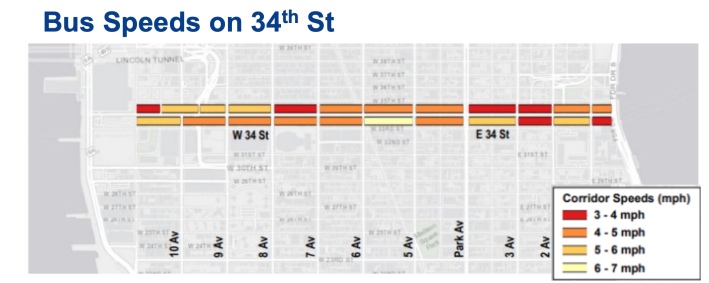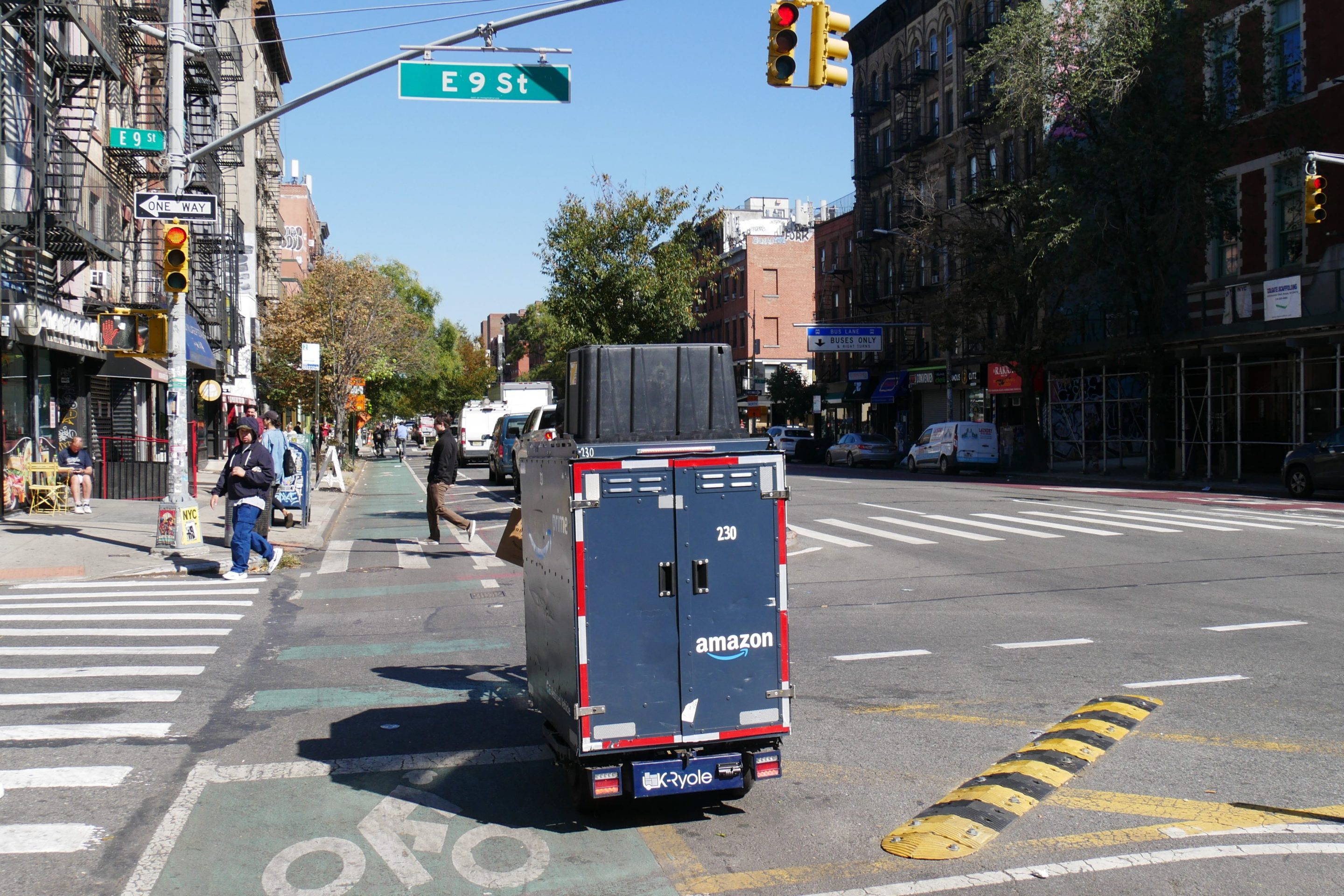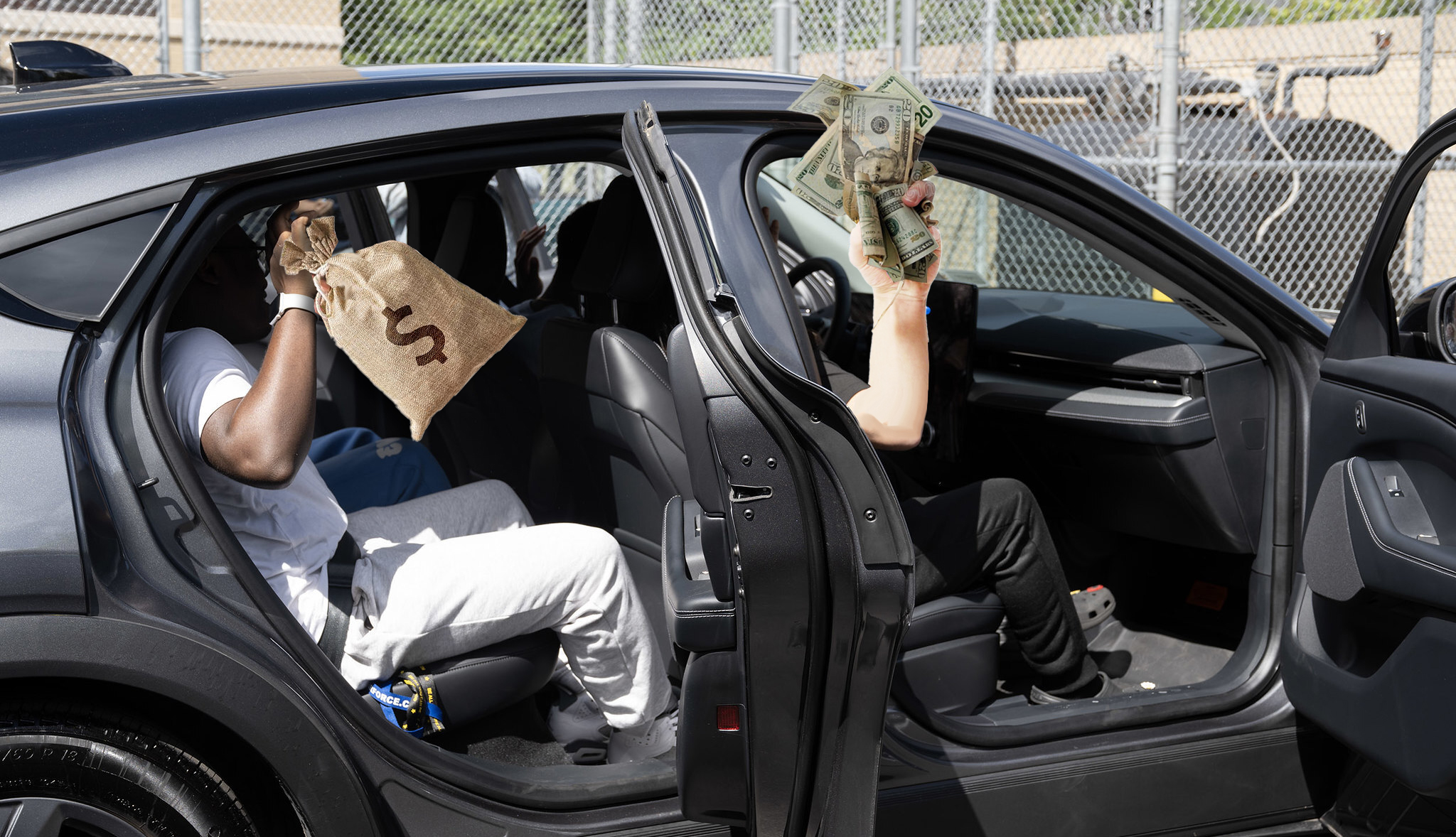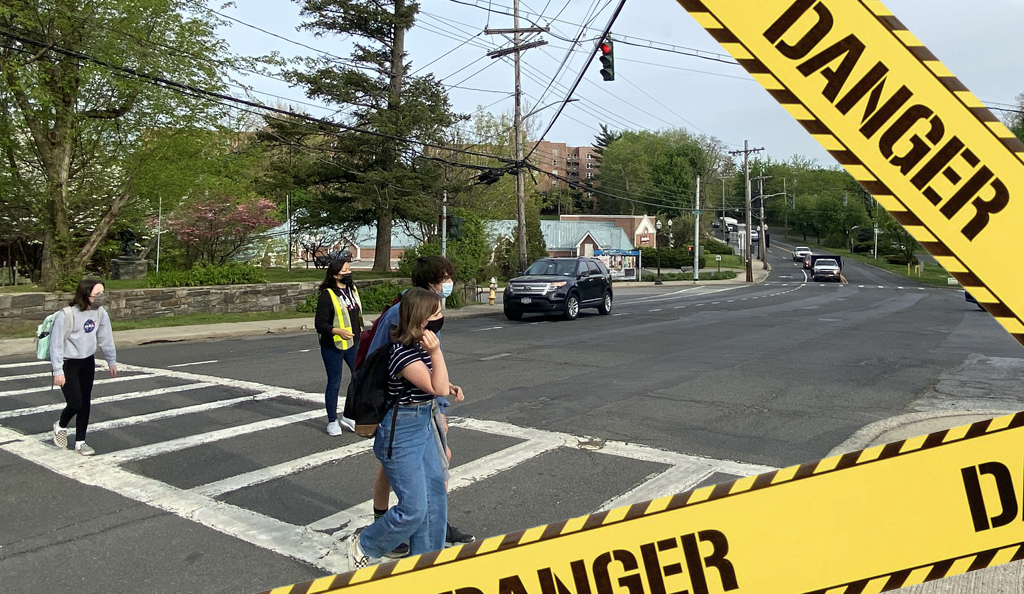David Peterson didn't log the only dominant win on Wednesday night.
Manhattan Community Board 6 overwhelmingly supported — by a vote of 31-5 — the DOT's plans to install a busway on 34th Street, passing a resolution that urged the city to prioritize its installation. The approval passed after an hour of public back-and-forth that only briefly devolved into shouting or demands to prove who really lived in the neighborhood.
The 34th Street busway plan, like busways across the city, would ban through traffic by private cars on a piece of the corridor, in this instance between Third and Ninth avenues. Almost 30,000 bus riders per day suffer crosstown buses at achingly slow sub-five miles per hour speeds in many areas of the thoroughfare, which is why the DOT is using one of the best tools in its toolboxes to speed up the rides.

The leadership of nearby Community Boards 4 and 5 had previously teamed up with CB6 to call for a busway, and City Council members Erik Bottcher and Keith Powers, who represent the corridor, both support the measure to speed up buses. So in some sense the resolution's passing did not come as much of an enormous shock as did the aforementioned Mets win.
However, the Murray Hill Neighborhood Association and the New York Post recently teamed up to try to stop the plan over what they said was a lack of data and community outreach on the bus priority measure. Most of the opposition to the busway on Wednesday night was centered on the accusation that the plan was being rushed through without hard data on what would happen to traffic that could no longer drive all the way across 34th Street, since the thoroughfare sits between the Lincoln Tunnel and the Queens Midtown Tunnel.
In reality, the busway on 14th Street has proven that restrictions on private vehicle access does not cause ancillary traffic. Nonetheless, busway opponents consistently spread fears that tunnel traffic would inundate the streets surrounding 34th Street.
"Our tunnel traffic will not magically disappear," said Murray Hill Neighborhood Association Vice President Jessica Lavoie. "This is not 14th Street. Thirty-fourth Street is a major crosstown corridor, a direct link between two tunnels and an extension of I-495, you cannot copy and paste a plan meant for a completely different traffic pattern.
"We all want better transit," she added at the end of her remarks, which remained in support of keeping buses on the corridor slow.
The DOT has said that it will present a more granular traffic study to residents when the analysis is finished, but the initial outreach on the busway did have some traffic studies that showed where drivers on 34th Street were going. Per the DOT, just under half of the drivers using 34th Street were going to other boroughs or outside of the city entirely.
Of course, congestion pricing has already cut into some of the traffic using both tunnels on either side of 34th Street. As such, other residents near the tunnels were plenty comfortable reminding people of that, and urged the community board to support the busway resolution.
"There's a tendency of people to always imagine the worst case scenario, and it actually never comes to fruition" said Dana Friedman, who lives on 37th Street. "We heard about it with congestion pricing. We heard about it with the 14th Street busway. We heard about it when they wanted to take the cars out of Central Park, when they want to take the cars out of Prospect Park."
Friedman also used her time to make the case for the busway as an improvement that will benefit thousands of people through the decades, something the board should consider as a legacy.
"The heartbeat of the city is public transportation, and I feel like as a city we have a responsibility to ensure that we have the best public transportation possible. Decades from now, where we all won't be here anymore living in Murray Hill, there will be a community board that has turned over four or five times. But there could be a legacy of a busway to benefit tens of thousands of people, and we should be supporting that and not impeding progress," she said.
It was ultimately arguments like Friedman's that won the day and moved past the most vocal opposition to the project so far. Lawsuits against bus priority projects consistently fail in court, because managing streets to speed up buses falls well within the city's purview. That leaves opponents with little procedural recourse beyond showing up to public meetings to whine.
"I’m excited for the 28,000 daily bus riders who will see faster, more reliable service thanks to the 34th Street busway we supported and for the new riders it will bring by making the bus a better option," said Transportation Committee Chair Jason Froimowitz.
CB6 chairwoman Sandra McKee did say that by the end of the month, the DOT would be giving a briefing to the Murray Hill Neighborhood Association on the results of the traffic study the agency is doing, so busway opponents will also get what they were after.
The DOT has said that it plans to share a more refined 34th Street plan this summer, and implement the busway in the summer or fall of this year.






